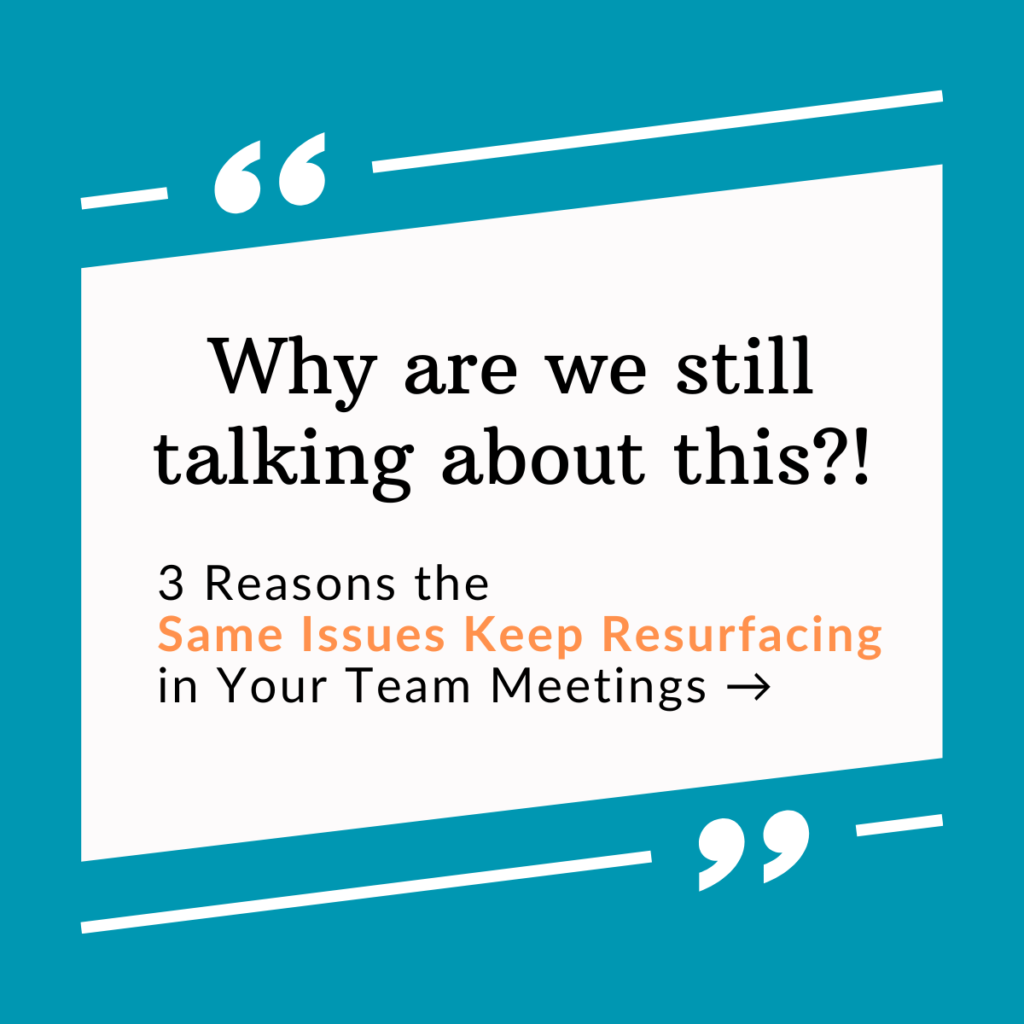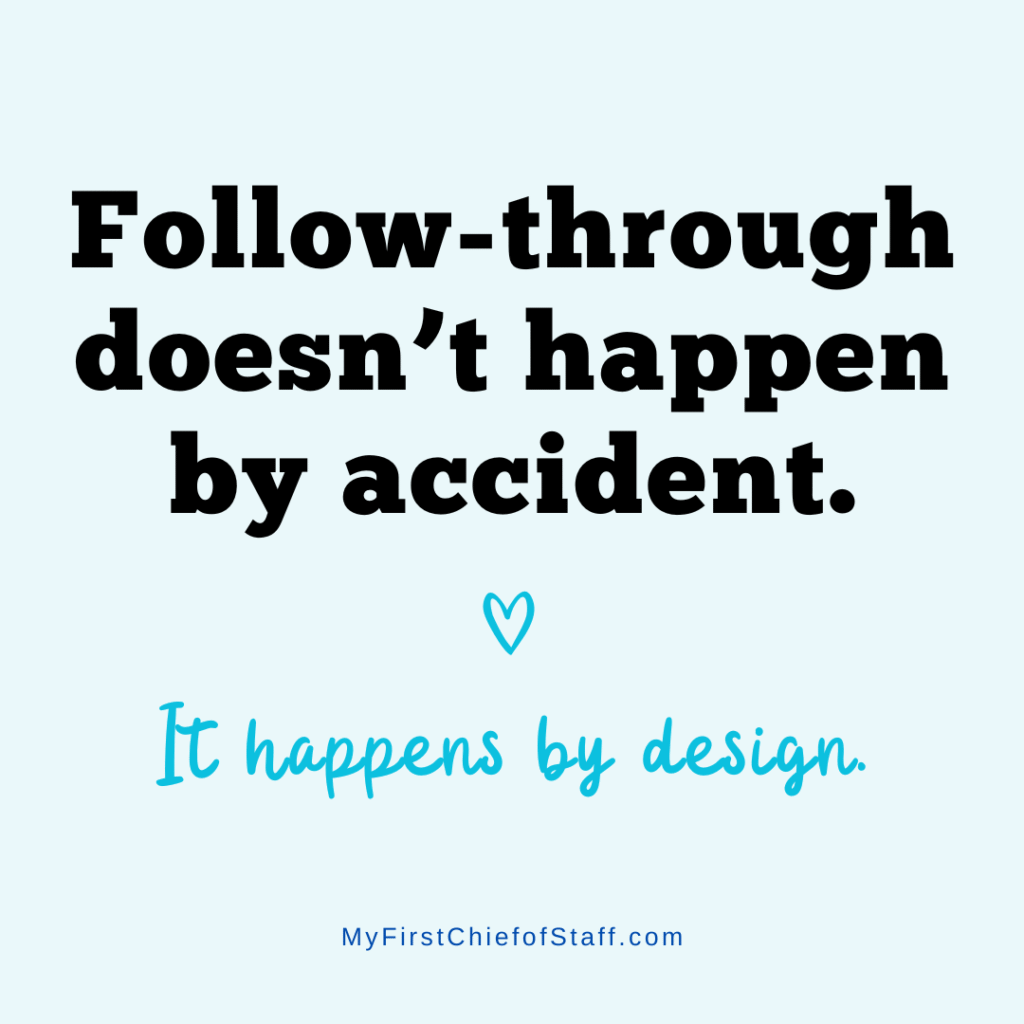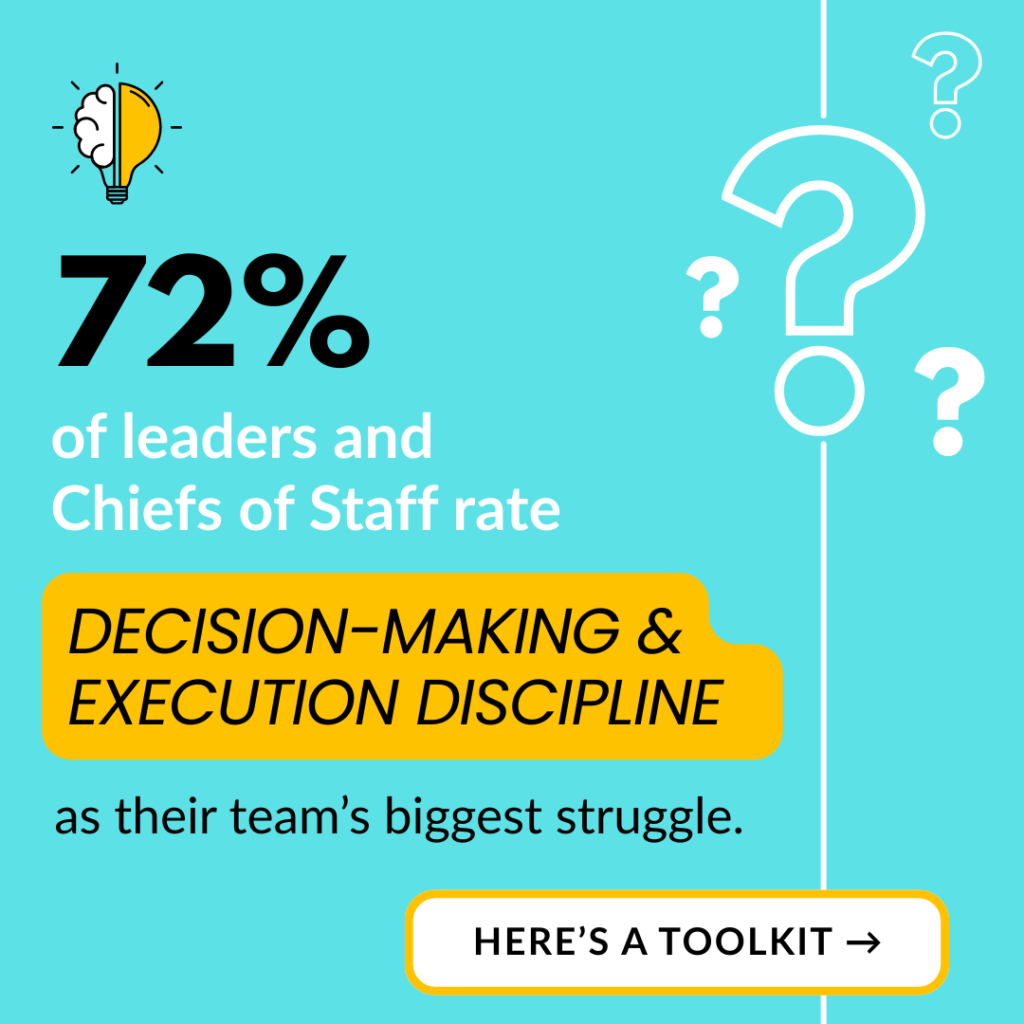We’ve all been in those meetings.
Everyone agrees on the goals. The strategy is clear enough. But somehow… progress stalls.
Decisions get recycled. Follow-through slips. Tensions bubble under the surface.
When a leadership team is stuck, it’s rarely because people don’t care. It’s because they don’t have the structure and support to move forward together.
That’s where these four tools come in. Use them to cut through ambiguity, reduce rework, and create momentum—without adding more meetings or complexity
🛠️ 1. Decide the Decision-Maker
When no one’s clear on who makes the final call, even small decisions can derail progress.
Try asking these questions the next time a topic starts to spiral:
- “Are we deciding this now?”
- “Who owns the decision?”
- “Is this a consultative call, consensus, or single-owner decision?”
Use a simple table to keep things straight:
| Topic/Decision | Decider | Consultees | Informees | Notes |
|---|---|---|---|---|
| Q4 Strategy | CEO | CFO, Head of Sales | Full SLT | Draft due Sept 1 |
Tip: This isn’t about rigid hierarchy—it’s about clarity. Ambiguity kills execution.
🛠️ 2. Keep a “Loose Ends” List
Some issues don’t get resolved in the moment—but they do need to stay on the radar.
Create a living list of open loops, and check it regularly during exec meetings or 1:1s. Ask:
- “Do we need to revisit this?”
- “What’s the next step?”
- “Who’s on point?”
Use a basic format like this:
| Topic | Last Update | Status | Next Step | Owner |
|---|---|---|---|---|
| Pricing rollout | May 15 | Pending decision | Review with marketing lead | COO |
| DEI survey results | May 20 | In progress | Share summary with team | Head of People |
Tip: Don’t assume people will remember. Visibility = accountability.
🛠️ 3. Draft the Team Agreement
When a topic keeps coming up—like cross-team communication, meeting expectations, or decision rights—it’s often time for a shared agreement.
Instead of waiting for consensus to magically appear, offer a draft.
Say:
👉 “Want me to take a first stab at a working draft we can react to?”
Keep it simple and editable, like this:
(DRAFT) Team Agreement: Communication Expectations
Moving forward, we will...
- Acknowledge internal messages within 24 hours
- Share weekly status updates in #projects
- Send meeting agendas 24 hours in advance
Open questions:
- Should these apply org-wide or vary by team?
- How will we reinforce them?Tip: A rough draft gives people something concrete to edit—which is much easier than starting from scratch.
🛠️ 4. Draft the Message They’re Dreading
Sometimes leaders stall because they don’t know how to explain a tough decision, shift, or update.
You can help them move faster by offering to draft the thing they don’t want to write.
Say:
👉 “Want me to give you a first version to react to?”
Your goal isn’t perfection—it’s momentum. Even if they change everything, you’ve helped them get started.
Try something like this:
What We Decided (and Why)
- We’ve decided to move forward with [initiative or decision].
- Why:
[2–3 bullet points explaining rationale]
- Anticipated questions:
[concerns or risks to name]
- What’s next:
[timeline, ownership, communication plan]Tip: Framing tough updates clearly builds trust—both inside the team and across the org.
Final Thought
If your team is aligned on strategy but stuck in execution, the problem might be structure.
These tools give your team the scaffolding they need to build real momentum.
They’re not complicated. But they work.
Start small. Be consistent. And watch the culture shift.
📌 Want more tools like these? Subscribe to the Chief of Staff Coffee Break
📬 Need help building the systems your leadership team needs to scale? Reach out to talk about coaching or strategic support.



